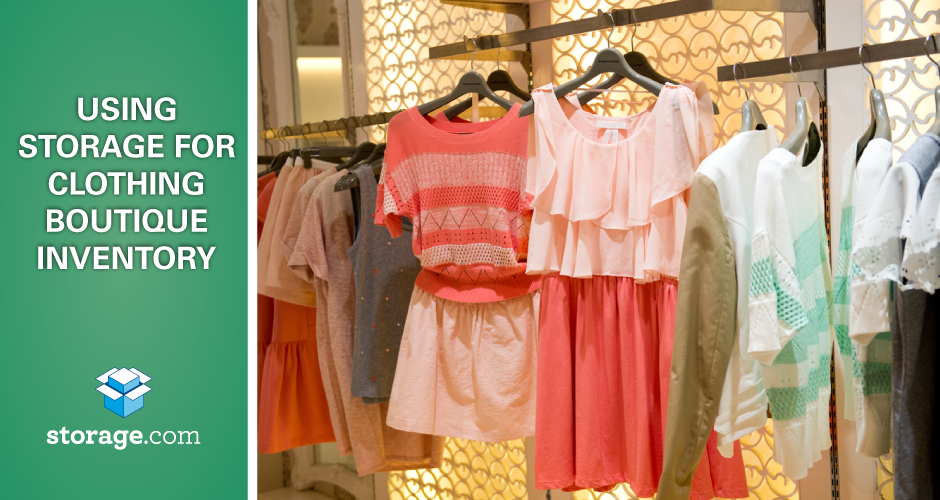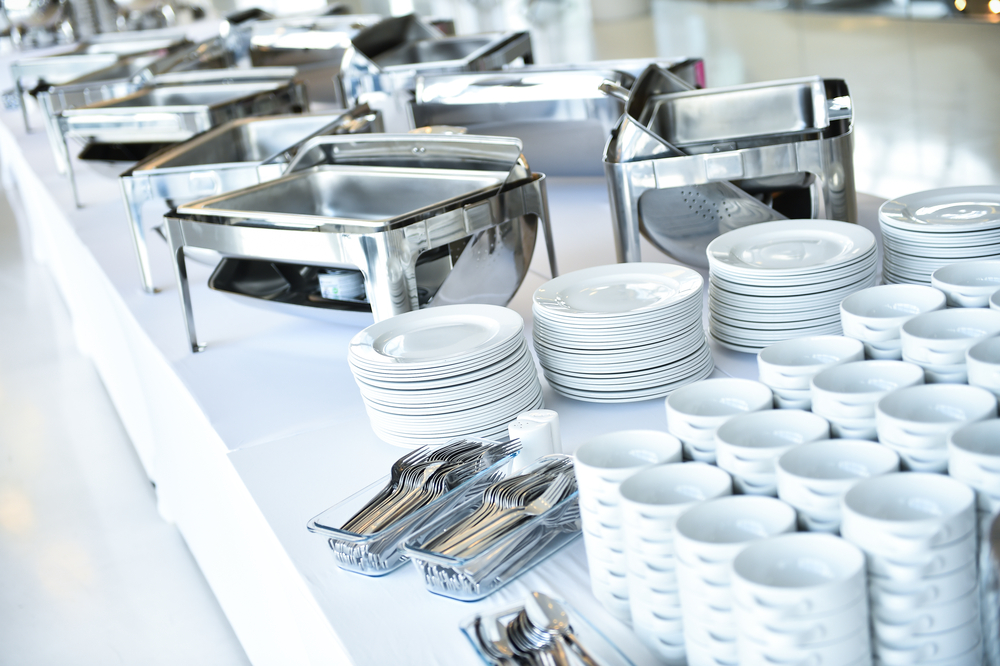By Molly Hammond, Storage.com
Running a clothing boutique is all about offering unique items to customers. Whether you’re keeping inventory on the cutting edge of fashion by constantly updating what’s on your shelves or carefully cultivating specialty items, you will undoubtedly run into the issue of where to keep all of your inventory at some point.
For most clothing boutiques, having unique inventory often comes at the expense of a spacious retail shop. This is especially true for boutiques just starting out on a tight budget or those stationed in big cities where rent is high. But just because you don’t have the space for additional inventory doesn’t mean you need to cut down on your offerings or start keeping extra items at home. Give self storage a try, as many boutique owners have!
Adam Sank, communications manager at Manhattan Mini Storage, is no stranger to helping boutiques make the most of their space. “In Manhattan, every square foot is precious—particularly if you’re in the business of selling boutique clothing,” he says. Sank believes that a storage unit allows boutique owners to keep their (admittedly small) storefronts stocked with the freshest clothing and can even serve as a back office in addition to a haven for extra inventory.
“Size definitely affects business,” says Candy Keane, owner of Three Muses Inspired Clothing in Jacksonville, Fla., adding that her costume and corset shop had to pare down their shoe selection just to save space. Despite having to downsize, Keane says that Three Muses elects to store extra pieces to sell the following year, which means they don’t have to devalue unique items just to move inventory for the upcoming season, like corporate stores do.
This is where renting a self storage unit as a warehouse for inventory can really help. It’s a great option for swapping out-of-season clothing for current season clothing and allows boutique owners to avoid those space-making sales. In fact, Three Muses benefits from storing out-of-season items for later displays.
“We do have sales completely out of season sometimes,” Keane explains. “Like when someone has a Christmas in July party and everyone needs sexy Santa costumes in the summer.”
So what do boutique owners need to think about when looking for storage to fit their inventory needs?
Find Convenient Storage
Getting a unit with convenient access is crucial when storing inventory for your boutique. As Keane mentioned, you never know when you’ll have a sudden need for sexy Santa costumes in the summer. And the last thing you want is to head to your storage facility just find out it isn’t open when you need to grab items.
“You might have to get up in the middle of the night to start inventory or move something at midnight, particularly if you’re having a sale or event the next day,” Sank says, touting facilities with 24-hour access and units with personalized keys/codes.
Sank also advises boutique owners look for storage facilities with decent security on top of 24-hour access, as all of the inventory they’ll be storing is valuable.
Keep Clothes in Good Shape
There’s no bigger disappointment than investing in a self storage unit only to find that the clothing inside has been damaged. Proper clothing storage is simple, and while many mavens already know the best ways to store clothing inventory for long periods of time, it never hurts to refresh on the general guidelines. Here’s what Sank suggests:
- Never store in plastic. Garments often ship from the manufacturer in plastic, but it’s important to get rid of these bags as soon as possible because they trap moisture inside the bag, which can cause clothes to grow mold, yellow over time, or smell like mildew. Instead, store in unbleached muslin or between sheets of acid-free tissue paper.
- Never hang garments on wooden or wire hangers. The weight of the garment you’re hanging will pull against these types of hangers and stretch out or permanently alter its shape. Instead, use plastic or padded hangers to keep garments in good condition.
- Keep all fabric away from light and heat. A typical unit will be windowless, which does a nice job of preventing overexposure to sunlight, yet you can take it a step further by getting a climate-controlled unit. These units allow you to set a consistent temperature and humidity level so clothing can stay cool and dry.
- Clean before storing. This tip applies to secondhand and vintage boutiques. Even if an article of clothing appears clean, you’ll want to make sure it’s truly spotless before storing it. If you don’t, tiny stains that weren’t visible at first can develop over a few months. Then, you’ll find yourself with a ruined (and often irreplaceable) garment.
Using self-storage as a place for extra inventory is a convenient and affordable way to upgrade your boutique from broom-closet to fashionable walk-in! Just be sure to find a facility that allows you to keep your inventory in good shape and get to it when you need it.






